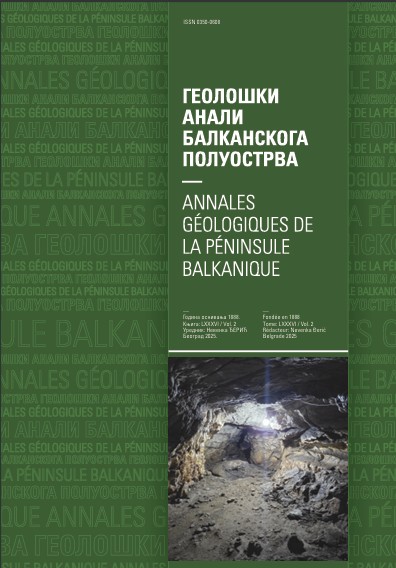Geological and general geochemical characteristics of Fe-Ni oolitic ores of the Mokra gora basin (Western Serbia)
Abstract
The Mokra Gora basin (30 km2) in the Western Serbia is one of most important among numerous localities with Upper Cretaceous sedimentary iron-nickel ores appearing in central and southern parts of the Balkan Peninsula. The ore formation makes a basal part of a thick (>900 m) Upper Cretaceous marly-limstones complex and consists of iron-rich (pertly with oolites) conglomerates, conglomeratic sandstones, sandstones, and marls, locally with chart intercalations. The ore formation transgressively covers serpenunites of the Zlatibor massif and as the basin is a pseudoanticlyne with the axis orientation 234/14, it outcrops at northem, eastern, and southern borders of the basin. It is characterized by an average thickness of 19.4 m and Fe-chlorite, hematite, magnetite. goethite, and some pyrite, marcasite, bravoite, and millerite. In a relic of lateritic weathering crust of ultramafites underlying the ore formation, hematite, talc, kotchubeite, and Ni-serpentinite appear. Average contents (in %) of Fe, Ni, Co, Cr, and SiO, are 21,7, 0.7, 0.02, and 1.22, respectively.
Copyright (c) 2000 Geološki anali Balkanskoga poluostrva

This work is licensed under a Creative Commons Attribution 4.0 International License.










